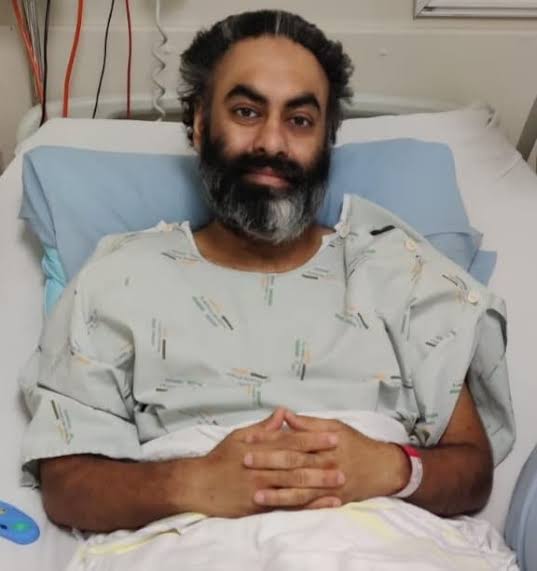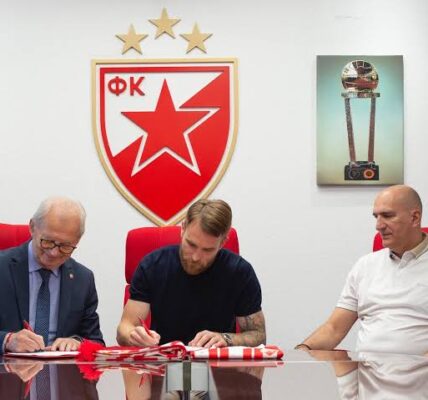Skip to content
On The Up: Te Atatū Man Pawanjit Singh Ghatora Finishes Half Marathon After Losing Leg in Crash.
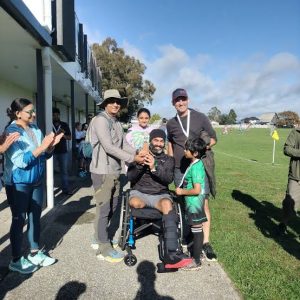
Pawanjit Singh Ghatora, a resident of Te Atatū, has recently defied expectations and proven the power of human resilience and determination.
After surviving a life-changing crash that resulted in the loss of his leg, Ghatora’s journey to completing a half marathon is a testament to his strength, both physically and mentally.
A Life-Altering Event
The story of Ghatora’s remarkable recovery began four years ago when he was involved in a serious car accident.
The crash was a devastating event that not only altered the course of his life but also challenged his very identity.
His injuries were severe, and despite the doctors’ best efforts, they ultimately decided that amputation of his leg was necessary to save his life.
For many, the loss of a limb might have seemed like an insurmountable obstacle, but for Ghatora, it marked the beginning of a new chapter—one that would require him to push beyond conventional boundaries.
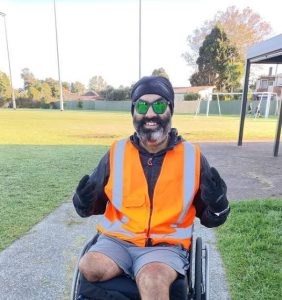
Despite facing a future filled with challenges, including the physical, emotional, and psychological toll that often accompanies such a significant change, Ghatora refused to let his circumstances define him.
The Road to Recovery
The road to recovery for Ghatora was long and arduous.
Initially, he struggled with the basic tasks of daily life that many people take for granted.
Walking, standing, and even moving around with the prosthetic limb were all monumental challenges that he faced with grit and perseverance.
But as time passed, Ghatora found solace in setting goals—small, achievable steps that would ultimately lead him toward his greater ambition.
One such goal was to return to running, a passion he had before the accident.
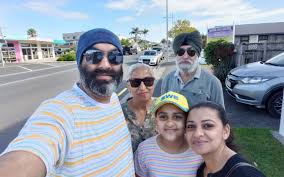
His interest in running, though not an obsession, had always been a part of his life.
Before the accident, he had participated in short runs, often for charity events, but never had he considered completing a half marathon.
However, after his recovery began, he decided that one of his long-term goals would be to cross the finish line of a half marathon, a symbolic gesture to show that nothing, not even the loss of a leg, would stop him from living life to its fullest.
Training with Determination
Achieving this ambitious goal required months of dedicated training. With the help of physical therapists, prosthetics specialists, and an unwavering support system from his family and friends, Ghatora began the painstaking process of building his strength and endurance.
Training for a half marathon requires more than just physical fitness; it demands mental fortitude, a quality that Ghatora had in abundance.
He started slow, walking short distances and gradually increasing his pace.
His prosthetic leg was specially designed to accommodate the stresses of running, and with the assistance of his therapists, he worked tirelessly to adjust to it.
There were days when the pain was overwhelming, and the progress seemed too slow, but Ghatora remained resolute in his belief that every step, no matter how small, was a victory in itself.
“It was never about getting the fastest time,” Ghatora says, reflecting on his training. “It was about proving to myself that I could do it.
The journey was just as important as the finish line.”
Overcoming Doubts and Challenges
As the race day approached, Ghatora’s resolve was put to the test.
He faced moments of self-doubt, wondering if he could actually achieve such a feat.
The half marathon distance—21 kilometers—seemed like an impossible challenge for someone who had only recently learned to walk again.
But with each step forward, Ghatora found strength in his determination and the encouragement of his loved ones.
Support poured in from all sides. His friends, family, and even strangers who had heard of his journey rallied behind him.
His community in Te Atatū became his support network, offering words of encouragement, training tips, and sometimes, just the motivation he needed to keep moving forward.
The final hurdle was a mental one.
It was one thing to be able to run short distances or even train for a race; it was another to push through the doubt and fear of failure.
But Ghatora managed to quiet those fears by focusing on the simple act of running itself.
He knew that the race was about more than crossing the finish line—it was about reclaiming a piece of his life that had been lost in the accident.
Crossing the Finish Line
Race day arrived, and Ghatora stood at the starting line, feeling a mixture of excitement and nerves.
Surrounded by other runners, some of whom had been following his journey, he knew that this moment was a culmination of everything he had worked toward.
He was no longer defined by his accident; he was defined by his ability to overcome it.
As the race began, Ghatora focused on his breathing and his stride.
The crowd’s energy fueled him, and every step he took felt like a triumph over the pain and the struggles that had once seemed insurmountable.
His determination pushed him through the miles, and finally, after hours of running, he crossed the finish line.
It was a moment of pure triumph—a victory not just over the half marathon but over the adversity that had threatened to consume his life.
A Symbol of Hope
For Ghatora, finishing the half marathon was not just a personal achievement—it was a powerful symbol of hope for others facing similar challenges.
His story has resonated with many, showing that the human spirit can overcome even the most difficult obstacles.
He has become an inspiration to those who believe that a life-altering event can forever limit their future.
Ghatora’s journey is a reminder that adversity does not define a person; it’s how they respond to it that truly matters.
Today, he continues to inspire others, using his story to motivate people to never give up, no matter the odds.
His message is simple yet profound: “The only limitations are the ones you place on yourself. Keep pushing, and you’ll find that you are capable of more than you ever imagined.”



